While there is no one-size-fits-all routine for instilling independence, these are just a few of the tricks I have learned over the last few years.
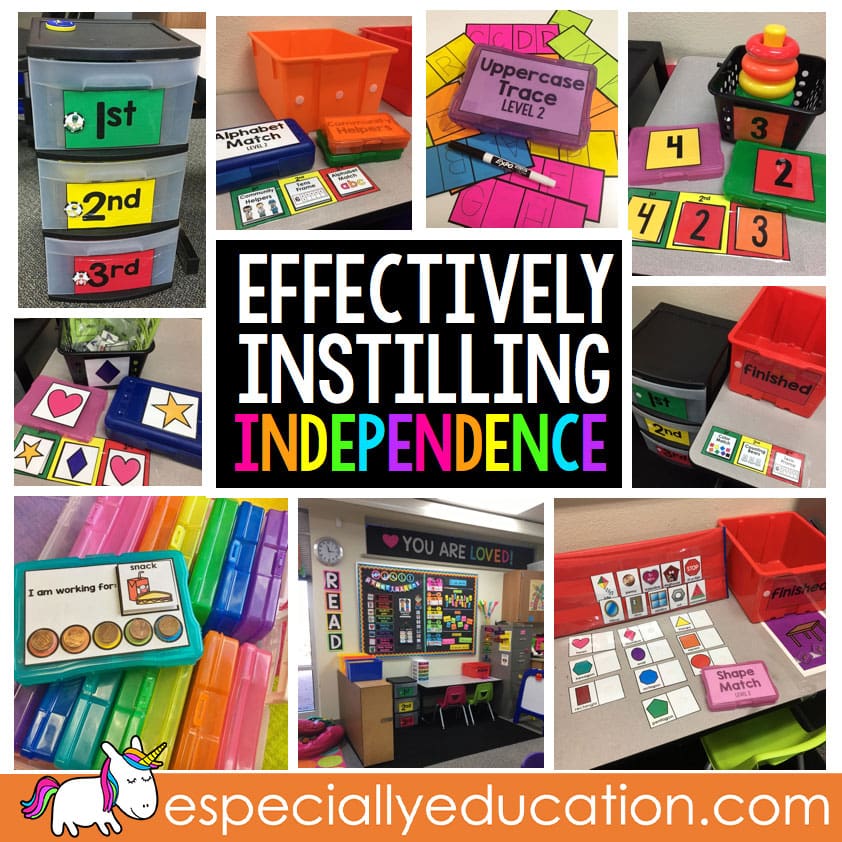
1. Start Small
Last year, I had one of the most amazing paraprofessionals I had ever met. Mrs. B was kind, exuberant, and radiated joy. As a grandmother to 3 toddlers, she often brought these “grandma tendencies” into the classroom. This woman could wipe a nose with one hand and zip up backpacks with the other. She was nothing short of a wonder woman.
I noticed how the students slowly depended on Mrs. B’s generosity. I told her how grateful I was to have her help, but it was time we had an independence makeover.
The first few weeks weren’t easy. I watched Mrs. B reach out to put away a child’s notebook and quickly draw her hand back, offering an encouraging, “You can do this!” or “Where does this go?”
While it might save us some time zipping up jackets and cleaning up supplies, the students should be attempting these on their own. If the student cannot do so right now, provide the least intrusive means of prompting and work toward that independence. Taking the time now to teach these skills will benefit our students in the long run.
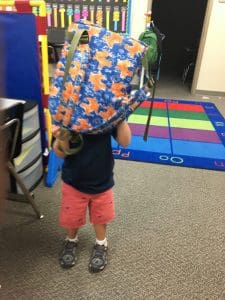
2. Independent Stations are a Game Changer
I’ve been doing independent stations in my classroom for three years now. Here are a few tips for setting up a successful independent workstation:
• Have materials ready and accessible for the students. This includes dry-erase markers, clothes pins, visuals, and any other required supplies. I found this pocket chart on Amazon, which is a great way to organize small pieces and visuals.
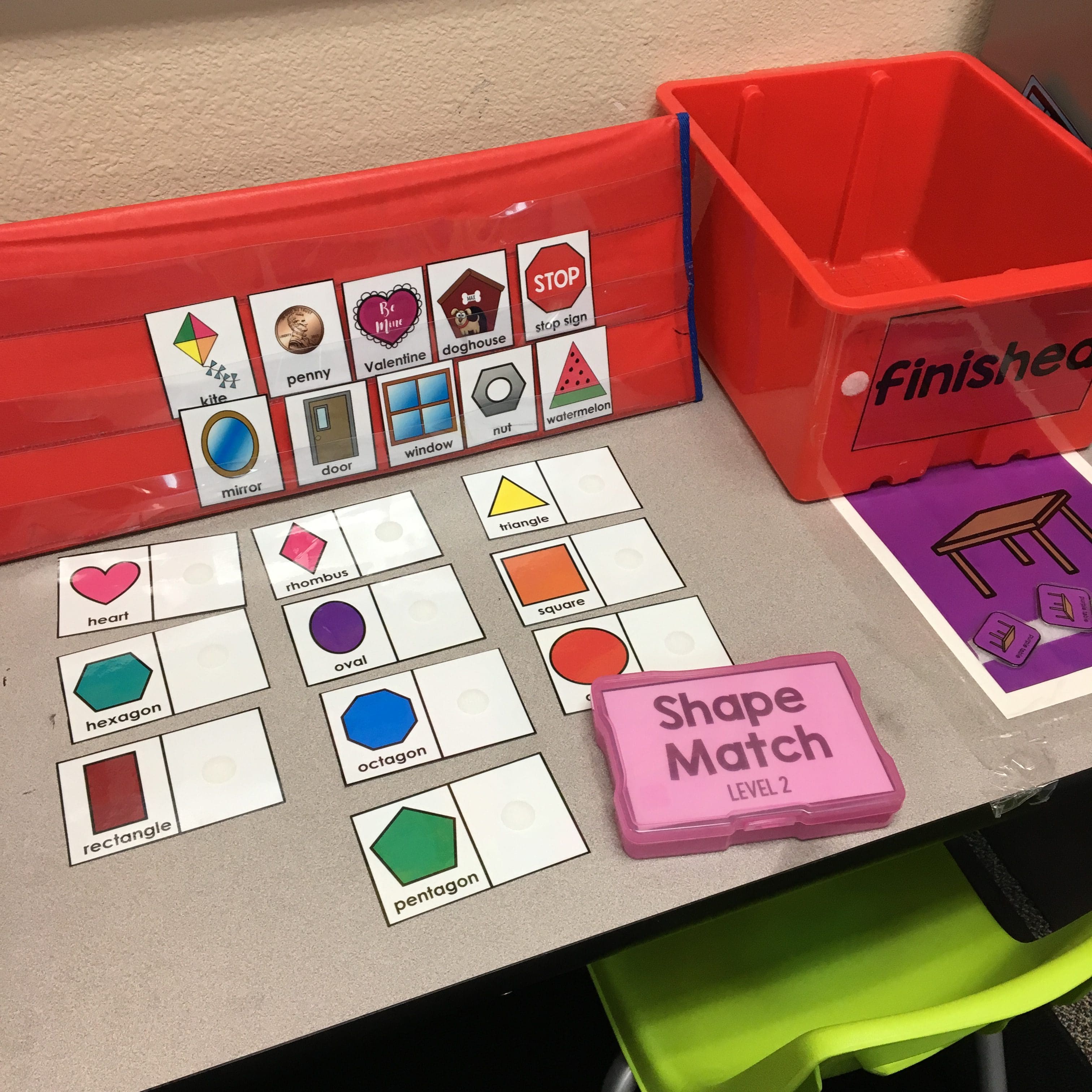
• Designate a section of the room for this station. I have a desk with a 3-drawer bin of activities.
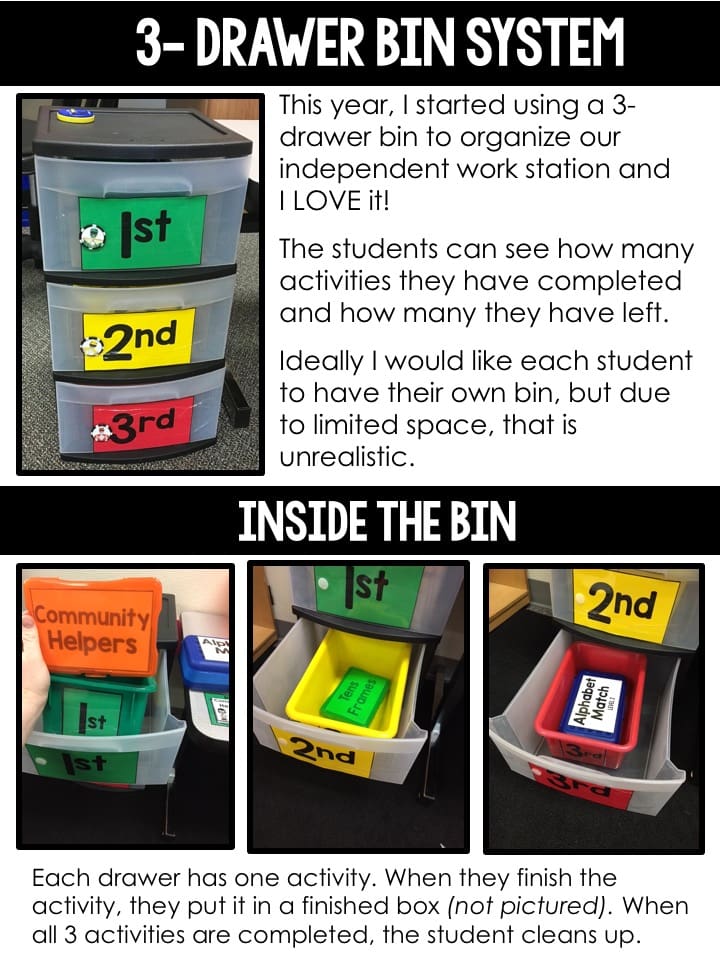
• Activities and routines must be pre-taught before a student will be successful. While starting out, I focused more on teaching the routine and expectations than the academic concepts. Check out free task box activities here.
• Independent does not mean unsupported. Many of my students still require assistance from a teacher during this station. For some of my students, I have a paraprofessional sit one-on-one with the student, providing prompts as needed. For my more advanced students, I periodically check in with them during our 15-minute station rotation. (Verbally or passing by).
3. Reinforce Often
We use token boards in my classroom, where the students earn tokens for being on task, completing work assignments, or when they are exhibiting expected behaviors. The students then redeem the tokens for a short break before returning to work.
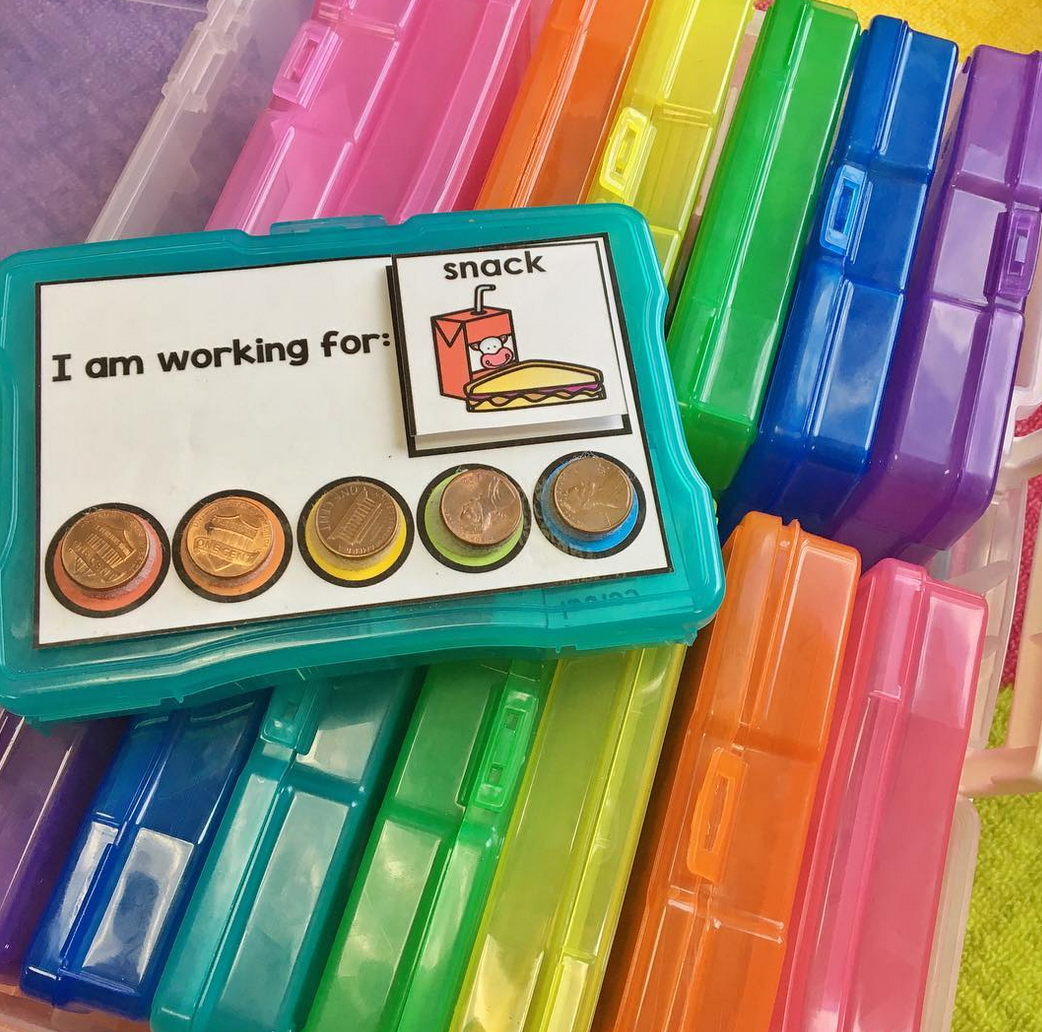
Teaching independence, as with any learned skill, must be reinforced frequently. I doled out tokens for almost everything when I first taught my independent station.
“Thank you for sitting in your chair! Token on!”
“Way to open drawer #1! Token on!”
However, as students acquired these independent skills, I was able to scale back the reinforcement. After months of practice, many of my students now control their own token boards at the independent workstation, earning a token for each completed task.
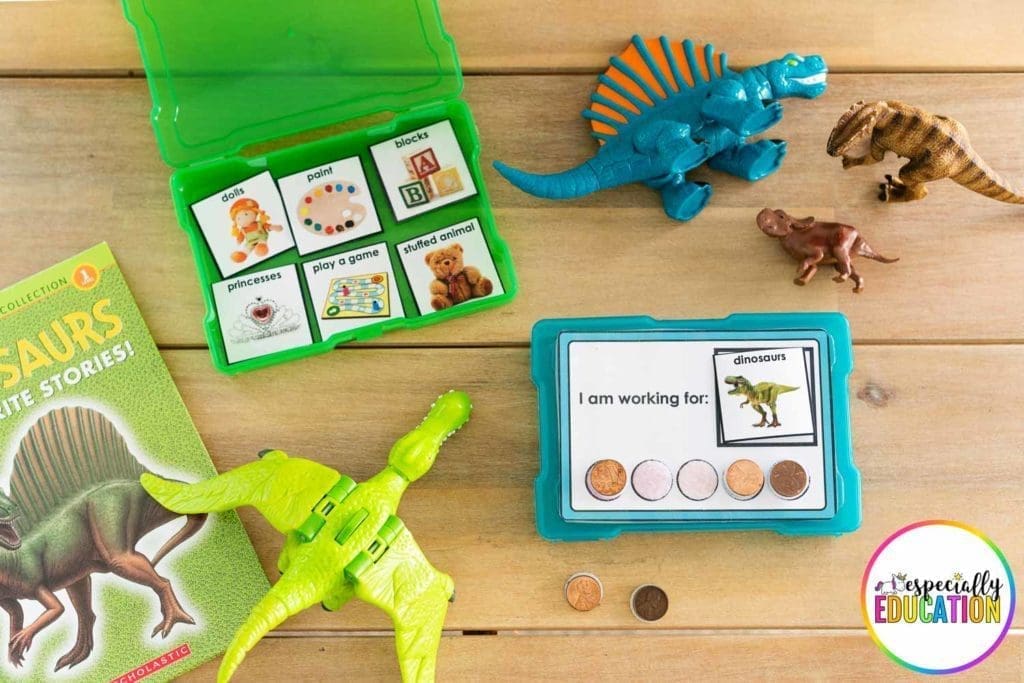
While there is no one-size-fits-all routine for instilling independence, these are just a few tricks I have learned over the last few years. What strategies have you found that help teach independent skills?
Thanks for stopping by!
Michaela
Leave a Reply